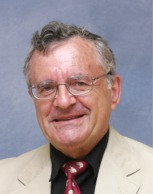How Soap Kills Corona
By Shlomo Maital
Political leaders, public health officials, doctors, talk show hosts, even Donald J. Trump, they all exhort us to wash our hands. Masks, distance, hygiene.
But those of us who are curious may wonder: If the novel coronavirus is able to survive inside our hostile bodies, even when the immune system tosses fragmentation grenades at it, and T-cells and antibodies and who knows what — why does soap kill virus? Simple soap? Really?
I follow cable news closely, but have not heard anybody, including doctors, explain why soap kills virus. This is just a tiny symptom of the truly awful manner in which we the public are given information, or in fact, NOT given it. We are told what to do, endlessly – but we are not told clearly, carefully, exactly why, based on science. I guess the assumption is, the public is dumb, dumber, dumbest. And that’s just not true.
So here, from a back-page article in the New York Times, printed in March, is the explanation. It is by Ferris Jabr, March 13, 2020.:
“People typically think of soap as gentle and soothing, but from the perspective of microorganisms, it is often extremely destructive. A drop of ordinary soap diluted in water is sufficient to rupture and kill many types of bacteria and viruses, including the new coronavirus that is currently circling the globe. The secret to soap’s impressive might is its hybrid structure. Soap is made of pin-shaped molecules, each of which has a hydrophilic head — it readily bonds with water — and a hydrophobic tail, which shuns water and prefers to link up with oils and fats. These molecules, when suspended in water, alternately float about as solitary units, interact with other molecules in the solution and assemble themselves into little bubbles called micelles, with heads pointing outward and tails tucked inside.
“Some bacteria and viruses have lipid membranes that resemble double-layered micelles with two bands of hydrophobic tails sandwiched between two rings of hydrophilic heads. These membranes are studded with important proteins that allow viruses to infect cells and perform vital tasks that keep bacteria alive. Pathogens wrapped in lipid membranes include coronaviruses, H.I.V., the viruses that cause hepatitis B and C, herpes, Ebola, Zika, dengue, and numerous bacteria that attack the intestines and respiratory tract. When you wash your hands with soap and water, you surround any microorganisms on your skin with soap molecules. The hydrophobic tails of the free-floating soap molecules attempt to evade water; in the process, they wedge themselves into the lipid envelopes of certain microbes and viruses, prying them apart.
“ “They act like crowbars and destabilize the whole system,” said Prof. Pall Thordarson, acting head of chemistry at the University of New South Wales. Essential proteins spill from the ruptured membranes into the surrounding water, killing the bacteria and rendering the viruses useless.”
Mankind has used soap for 4,000 years. Now we know why it works. If only we could find a therapeutic drug that works as well INSIDE our bodies, as soap does on our hands.



Leave a comment
Comments feed for this article